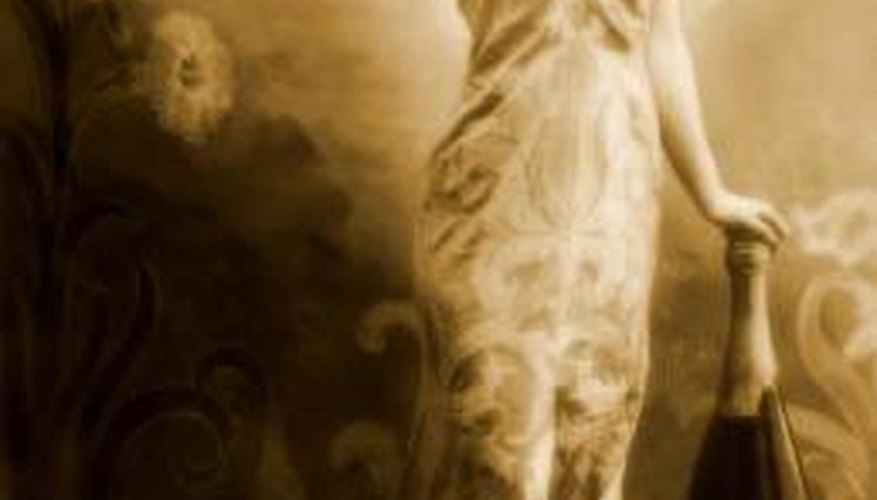The purpose of a Victorian banquet was to flaunt status, and the best way to do this was through an elaborate, expensive dinner. Courses were brought out and carved in front of the hostess, then passed around to each guest at the dinner table. Victorian banquet menus were written in French and offered a variety of options for the three- or four-course meal.
First Course
The first course of a Victorian banquet was almost always a soup. For example, a Vermicelli soup, prepared with tomatoes, onion, and garlic, was a popular choice. Another was Julienne soup, characterised by its finely cut vegetables. The soup was generally paired with bread. The Victorian era was a time during which exotic spices began to be regularly imported from foreign countries. Because of this, as well as the fact that culinary schools were first established during this era, the soups of the first course were flavourful, even though they were still light. A Victorian banquet consisted of four to nine courses, so the greater the number of courses, the lighter and smaller the portions of food. Those living in Victorian times did not eat salads; they were not part of what we call the appetizer course.
- The first course of a Victorian banquet was almost always a soup.
- Those living in Victorian times did not eat salads; they were not part of what we call the appetizer course.
Second Course
The second course was generally heavier than the soup of the first course but still lighter than the actual entrée. Guests were usually served seafood: broiled or baked salmon, trout, lobster, or whitebait. Oysters, when available, were also part of the second course. These foods demonstrated the high status of the guest, as they were expensive. In cases where the banquet consisted of nine small courses, there would be two light courses of seafood.
- The second course was generally heavier than the soup of the first course but still lighter than the actual entrée.
- Oysters, when available, were also part of the second course.
Entrée
Victorian banquet entrées most often included venison, poultry, and vegetables. Poor people of the Victorian era typically ate dry bread, onions, and milk. Because much of the Victorian banquet was about demonstrating class and status, meat was an important part of the meal. Given the cost of meat, it was always the entrée of a Victorian meal. Typical dishes were braised beef, a spring chicken, lamb, tongue, or mutton. The entrée was the highlight of the meal, as it was the most specially prepared and difficult dish to execute. Meats were essentially always roasted. Vegetables that accompanied the meal generally included broccoli, cauliflower, potatoes, and carrots. Baked bread was served with the entrée, and a thick gravy and Yorkshire pudding were prepared and served with roasts.
- Victorian banquet entrées most often included venison, poultry, and vegetables.
- Poor people of the Victorian era typically ate dry bread, onions, and milk.
Final Course
The final course of a Victorian banquet was always dessert. Usually, dessert consisted of imported fruits, such as strawberries and cherries. The ability to import fruits was a sign of high status and therefore denoted extravagance at Victorian banquets. Occasionally, fancy cakes such as Neapolitan cakes were also part of the menu for the final course. Neapolitan cakes consist of two or more layers of yellow, chocolate, and strawberry cake, with a glaze or simple buttercream frosting on top. Other dessert items included crepes, souffle, eclairs, and meringue. Sweet wine was served with dessert frequently, as well as coffee, tee, hot punch, and water. A nod to the gentility of the occasion, after the meal, guests were given a dish of cool water with a wedge of lemon, with which they would clean their hands.
- The final course of a Victorian banquet was always dessert.
- Sweet wine was served with dessert frequently, as well as coffee, tee, hot punch, and water.
